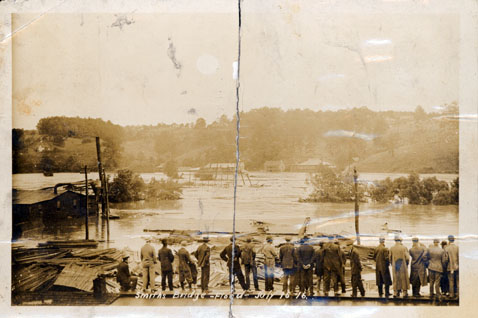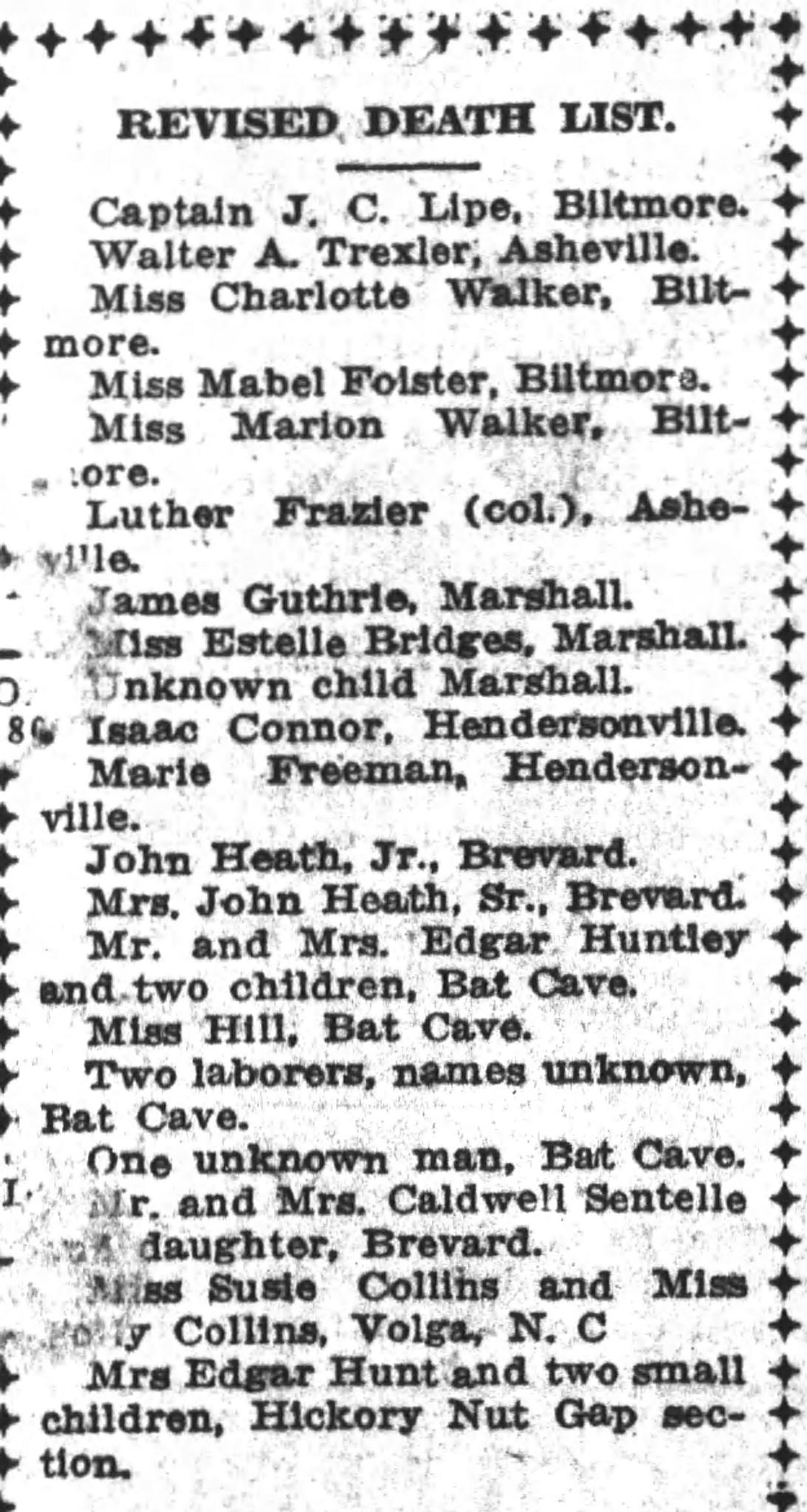
On this day in WNC history: In 1916, the worst documented flood in WNC ravaged the region, sweeping away people and buildings, isolating communities, and even changing the courses of rivers. At least twenty-five were killed in WNC, with Asheville and the Bat Cave regions taking the hardest hits.
Western North Carolina is no stranger to flooding. “Freshets” as these floods were often called, were described by settlers as early as 1791. Larger ones also occurred in 1901, 1902, and again in 1910. Before the area’s industrialization, these innundations were not always entirely destructive. Native Americans and settlers learned to depend on these seasonal alluvial floods that deposited rich silt along river bottoms where they grew crops. Residents along the region’s rivers likely could not have anticipated just how different the flood of 1916 would be.
On July 8, rain began falling in the mountains as a tropical storm from the Gulf Coast dumped between three to five inches over the next two days. The French Broad River quickly rose to eight feet above normal on the 11th before it gradually fell. WNC residents had no idea of the other storm heading their way from the Atlantic. The rain began falling once more on the already saturated hillsides and valleys on July 15 as another storm moved inland from Charleston. Fourteen inches of rain fell in Brevard and twelve in Hendersonville within twenty-four hours. Unable to hold any more water, the French Broad River swelled like never before in recorded history. By 9am on the 16th, the river had risen to over eighteen feet and then an hour later, the gauge was washed away. The French Broad hit an estimated twenty-four feet while the Swannanoa River likewise crested at over twenty feet. The flood spread, foaming and writhing, to reach almost a mile-wide swath in Asheville. Six Ashevillians died, while eight Hickory Nut Gorge region perished.
Reports circulated that Chimney Rock Village had virtually been washed away by the racing mass of boulders and water. The post office and hotels in the village were destroyed, as was the new bridge across the Broad leading up to Chimney Rock. The state geologist reported that in some places, the creeks and the Broad River had changed course and carved banks 75-feet-high. With feverish intensity, 1,000 incarcerated laborers and free citizens were pressed into service repairing roads and railways across the region, and by July 19th, a train was able to leave and another to enter Asheville. By late August though, some sections of the region were still only accessible by foot or horse, including an entire mile between Bat Cave and Gerton.
Flood along French Broad River, courtesy Buncombe County Special CollectionsRaleigh News and Observer, Oct 25, 1898
Railroad line left dangling, courtesy Buncombe County Special Collections
Smith’s Bridge washing by onlookers on the French Broad in Asheville, courtesy Buncombe County Special Collections
Asheville Citizen, July 19, 1916



